Why AI Image Generators Matter for Ecommerce
Enhancing Visual Appeal in Online Stores
Good visuals don’t just catch eyes. They sell products. In an online storefront, image quality is your first impression, your conversion tool, and your brand mood board — all rolled into one. AI image generators can create stunning visuals that align with your brand’s aesthetic, even if you don’t have a dedicated design team.
You can build product variations, seasonal campaigns, or new collections without booking a single photoshoot. The real win? Consistency. Image generators can match your brand’s lighting, background, and palette across hundreds of SKUs. That visual cohesion makes your site feel curated, not cobbled together.
Couple those generated visuals with expert finishing from creative partners like Pixofix, and you get the best of both worlds: fast generation speed with human-level polish. It’s the hybrid photography model ecommerce is moving toward.
Streamlining Creative Workflows for Fashion Brands
Fashion moves fast. Collections shift, trends update, and campaigns need to launch yesterday. AI image generators bring serious speed to that process. They can mock up editorial looks, simulate fabrics in motion, or generate lifestyle scenes before a single sample is made.
Instead of waiting for samples to shoot, fashion marketers can work with AI-generated concepts early in the cycle. Then when the final garments arrive, high-touch studios like Pixofix layer on realism, texture details, and retouching that humanizes the image. The result? Creative pipelines that move faster without losing the nuance fashion demands.
AI generators never replace the stylist's taste or the photographer’s eye — but they give fashion teams a jumpstart on creative direction, with way fewer bottlenecks.
Understanding AI Image Generators
How AI Image Generators Work
AI image generators take inputs — like text prompts, sketches, or reference images — and transform them into finished visuals using deep learning models. These models are trained on massive datasets, learning visual patterns, lighting scenarios, composition rules, and style trends.
When you type “minimalist sneaker on concrete, studio lighting,” the AI engine interprets that language into visual elements: angles, materials, shadows. It’s not copying images — it’s reconstructing visuals based on learned aesthetic logic.
The key is prompt design. The better your input, the more aligned the output. That’s why creative teams often draft prompt libraries to ensure brand consistency across AI outputs.
Key Technologies Behind Image Generation
At the heart of most AI image generators are diffusion models. These models start with visual noise and refine it step by step into a coherent image. Tools like Stable Diffusion or Midjourney rely on this iterative extraction of meaning from randomness.
GANs (Generative Adversarial Networks) also play a role, especially for hyper-real or stylistic outputs. These pit two neural networks against each other — one generates, the other critiques — until the image reaches a level of realism that could fool a human eye.
Some platforms integrate both, layering Photoshop-like controls on top of AI engines. That’s where tools like Pixofix come in, refining AI-generated images with expert retouching so the final deliverables look polished, not plastic.
Evaluating the Best AI Image Generators
Criteria for Selecting an AI Image Generator
Not all generators are built for ecommerce. Some pump out ethereal art. Others focus on photo-realism. For ecommerce use, prioritize tools that deliver:
- Output clarity and resolution
- Control over lighting, shadows, and angles
- Customizability for brand-specific looks
- Speed and prompt responsiveness
- Commercial license options
If you're operating a fashion label or photo studio, integration matters too. Look for platforms that plug into your asset pipeline, or work seamlessly with your post-production team like Pixofix.
Performance Metrics to Consider
Speed alone isn’t enough. An AI image generator’s real value is in consistency, control, and detail.
Key metrics to track:
- Prompt fidelity: How closely does the output match your vision?
- Retouching readiness: Does the image require major human edits?
- Batch performance: Can the tool handle dozens of variations without collapsing style or quality?
- Detail accuracy: Can it handle complex textures like denim, silk, or metal without warping?
Studio teams often test generators using a “retouching stress check” — running files through the image editor to see how much cleanup they need. Fewer touch-ups? That tool’s worth your time.
Top AI Image Generators for Ecommerce
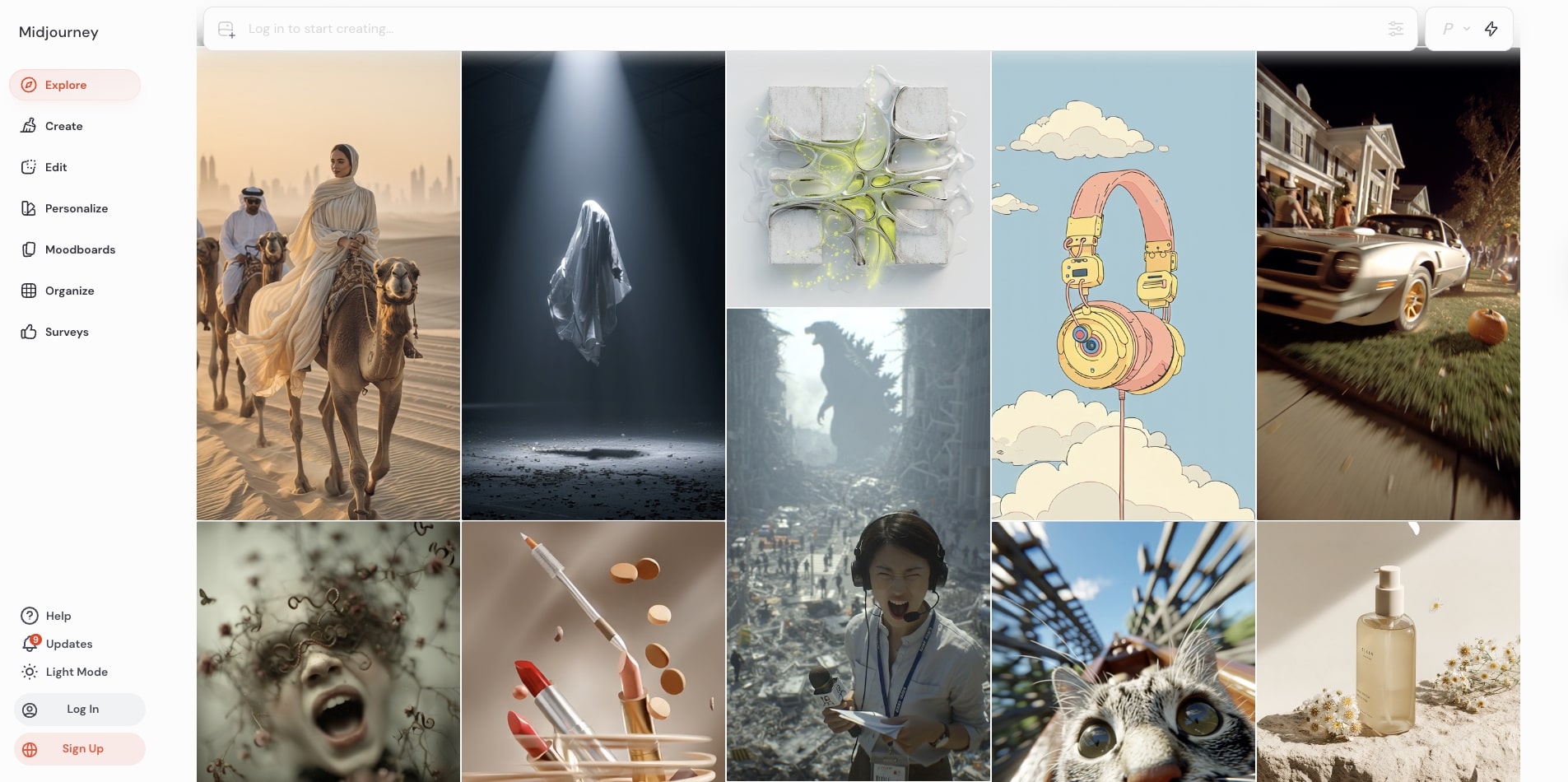
Best Overall AI Image Generator: Midjourney
For ecommerce versatility, Midjourney stands out. Its ability to balance realism with stylization makes it ideal for product imagery, conceptual campaigns, and branded social assets. It handles shadows, reflections, and material textures with surprising precision.
Fashion brands love its range, while general retailers lean on it for seasonal campaign creations. It’s not perfect out of the box, but when paired with a post-production partner like Pixofix, the results are sharp enough for homepage hero banners.
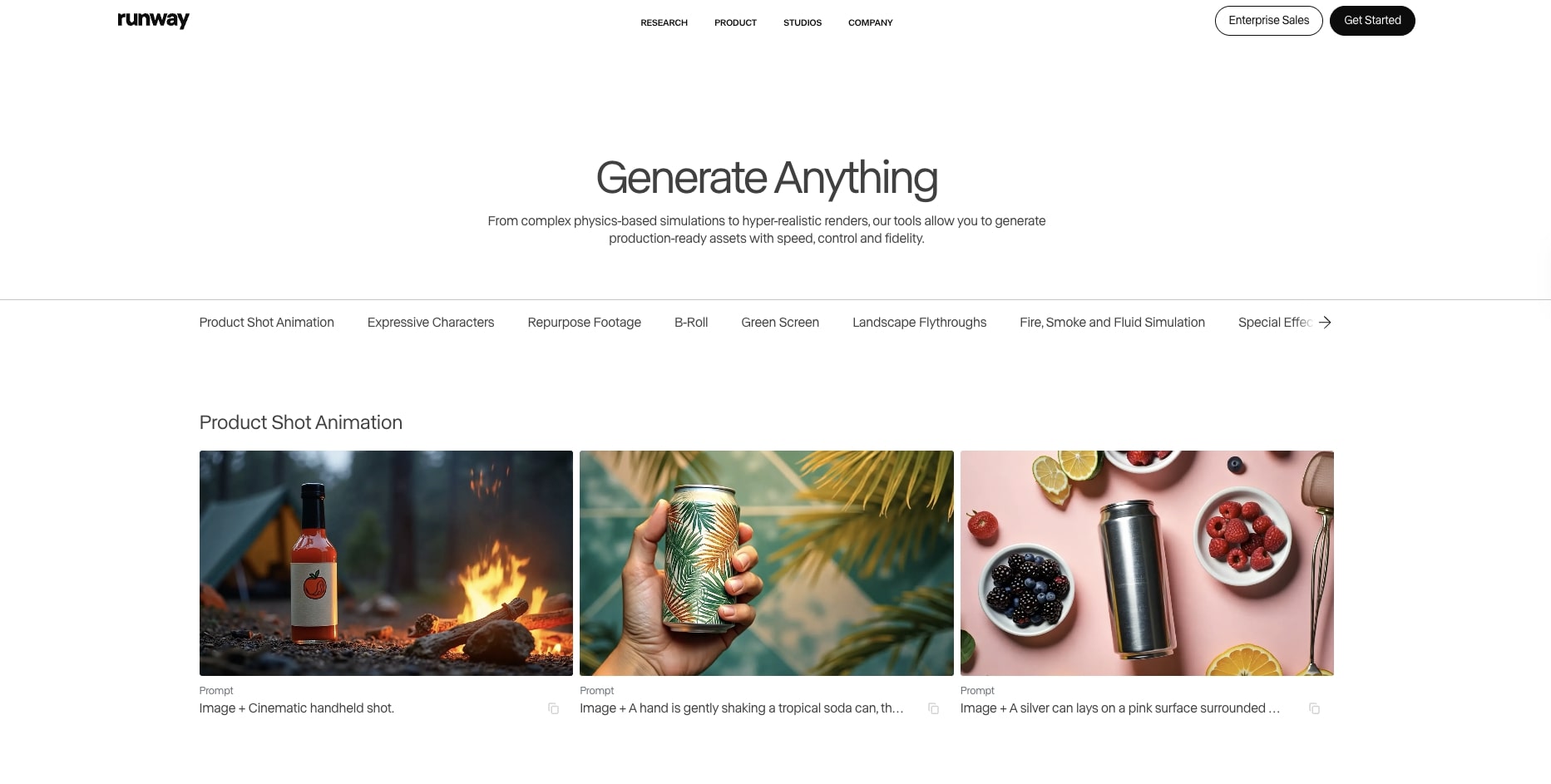
Best AI Image Generator for Fashion Photography: Runway AI
Runway AI edges ahead here. It offers video and dynamic editing tools alongside image generation, which is a huge plus for fashion brands exploring motion-first content. The interface caters to creatives — think storyboarding a backstage vibe or shooting street-style without a location scout.
But the raw outputs need finesse. That’s where high-touch editing comes in. A studio like Pixofix can elevate Runway AI’s direction into editorial-caliber images, with skin tone accuracy, garment texture, and digital finesse that AI still struggles with.
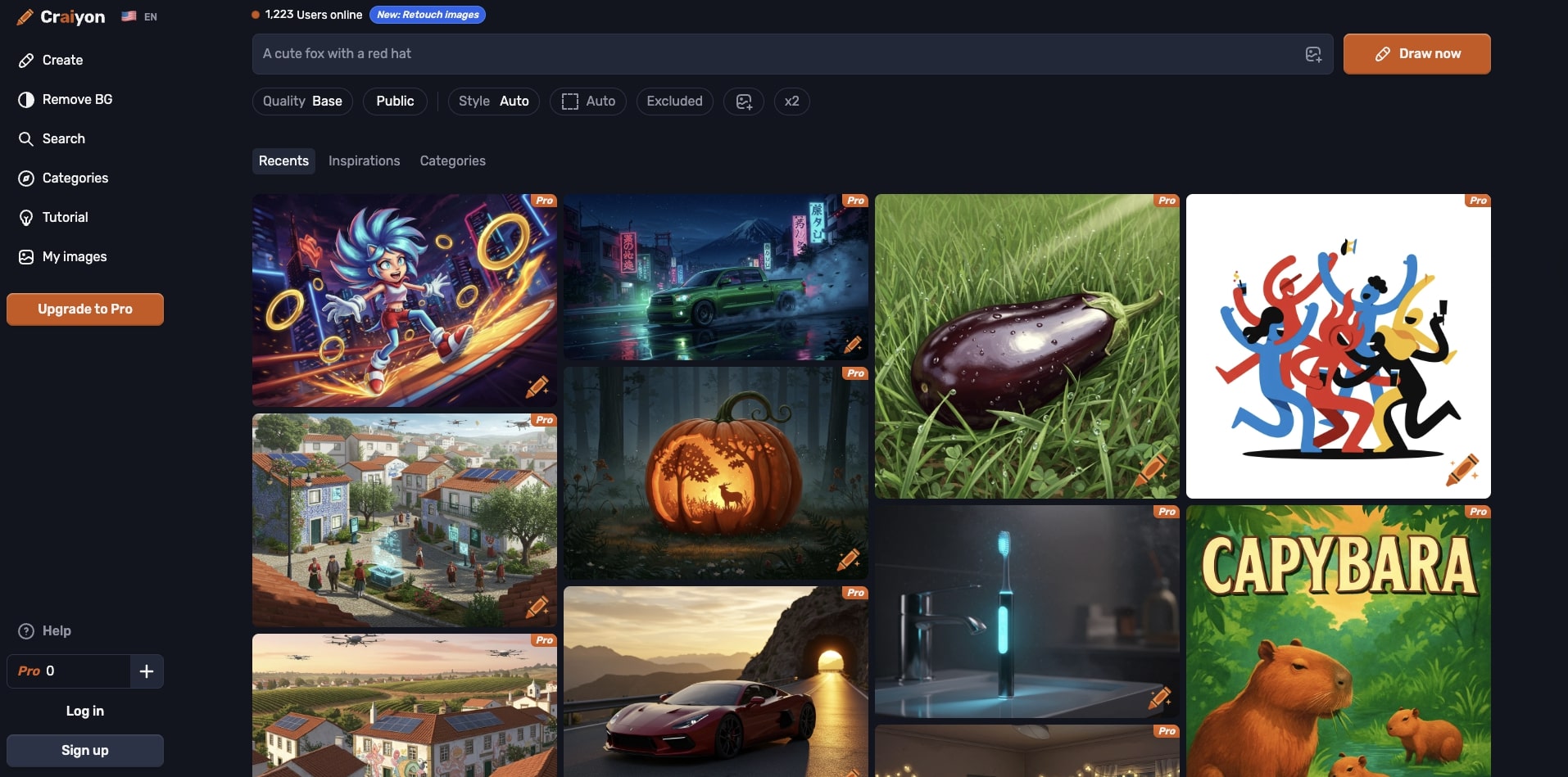
Best Free AI Image Generator: Craiyon
Craiyon (formerly DALL·E mini) wins on accessibility. It’s free, easy to use, and decent for mockups, moodboards, or early-stage concepting. The quality isn’t quite ecommerce-grade, so don’t expect studio-level polish — but it’s a solid sandbox to explore ideas before upgrading to pro-tier tools.
Think of it as your rapid ideation pad. When you’re ready for production, shift your workflow into a tool that can handle higher resolution outputs and hand off to your editor or retoucher.
Specialized AI Image Generators

Best AI Image Generator for Customization: Artbreeder
If brand identity is everything, Artbreeder offers tight control. It lets you blend images or tweak characteristics like lighting, shape, and facial features in a slider-based format. You get granular control without writing complex prompts.
This makes it powerful for brands with strict style guides or niche products. Campaigns stay aligned visually, even when assets are generated at scale. For ecommerce teams that hand off final files for retouching, Artbreeder’s consistency lowers total editing load — a win for both speed and budget.
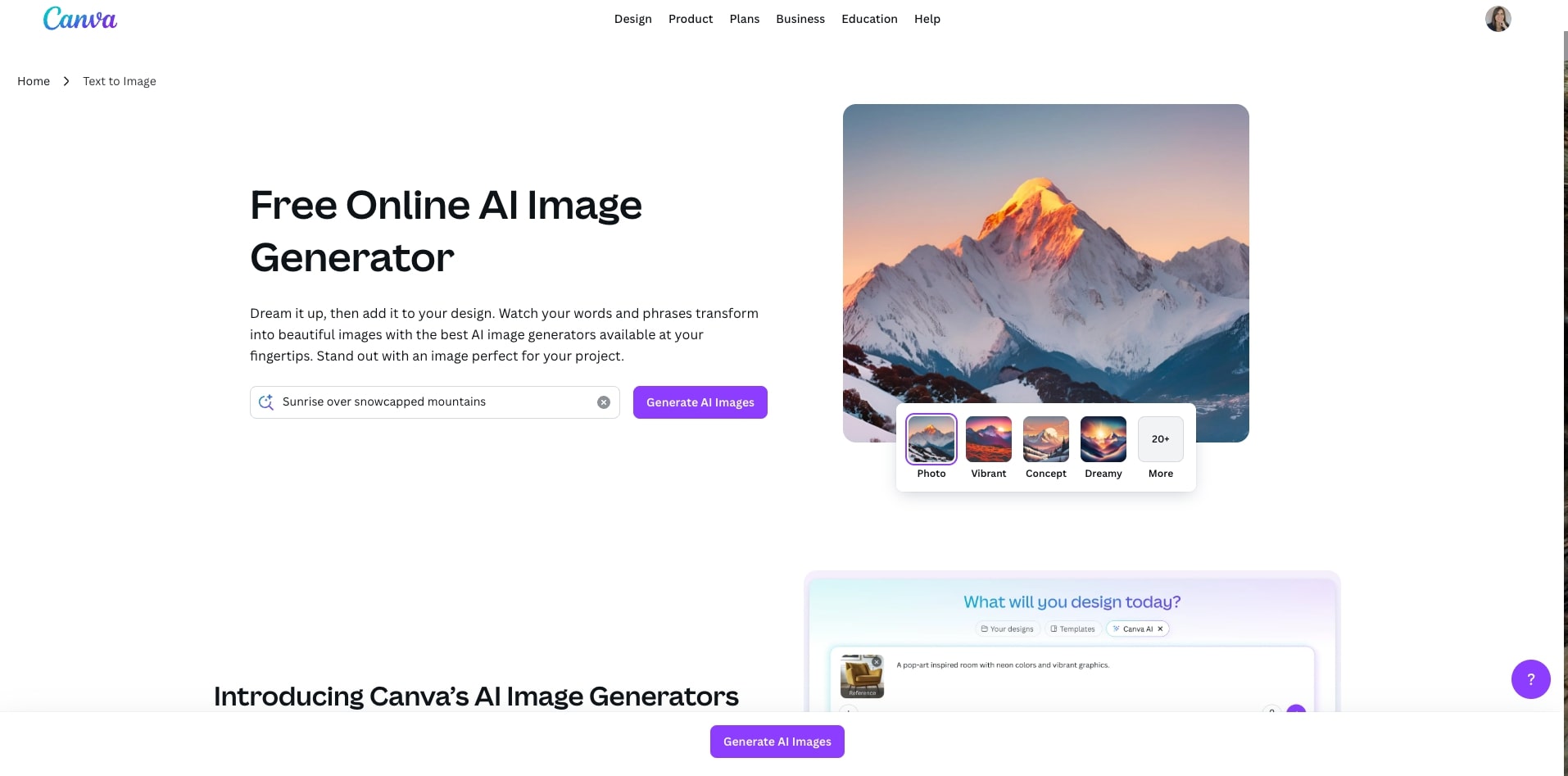
Best AI Image Generator for Fast Turnarounds: Canva AI Image Generator
Let’s talk velocity. Canva’s AI-powered image generator isn’t the most advanced, but it’s fast, intuitive, and built for marketers. You can whip up branded scene visuals, poster mockups, or lifestyle content in minutes — then drop them straight into social ads or email flows.
It’s not for finish-level product photography, but it crushes quick deadlines. For final campaign-ready images, teams often generate base assets in Canva and send them to studios like Pixofix for cleanup, adjustments, and final delivery.
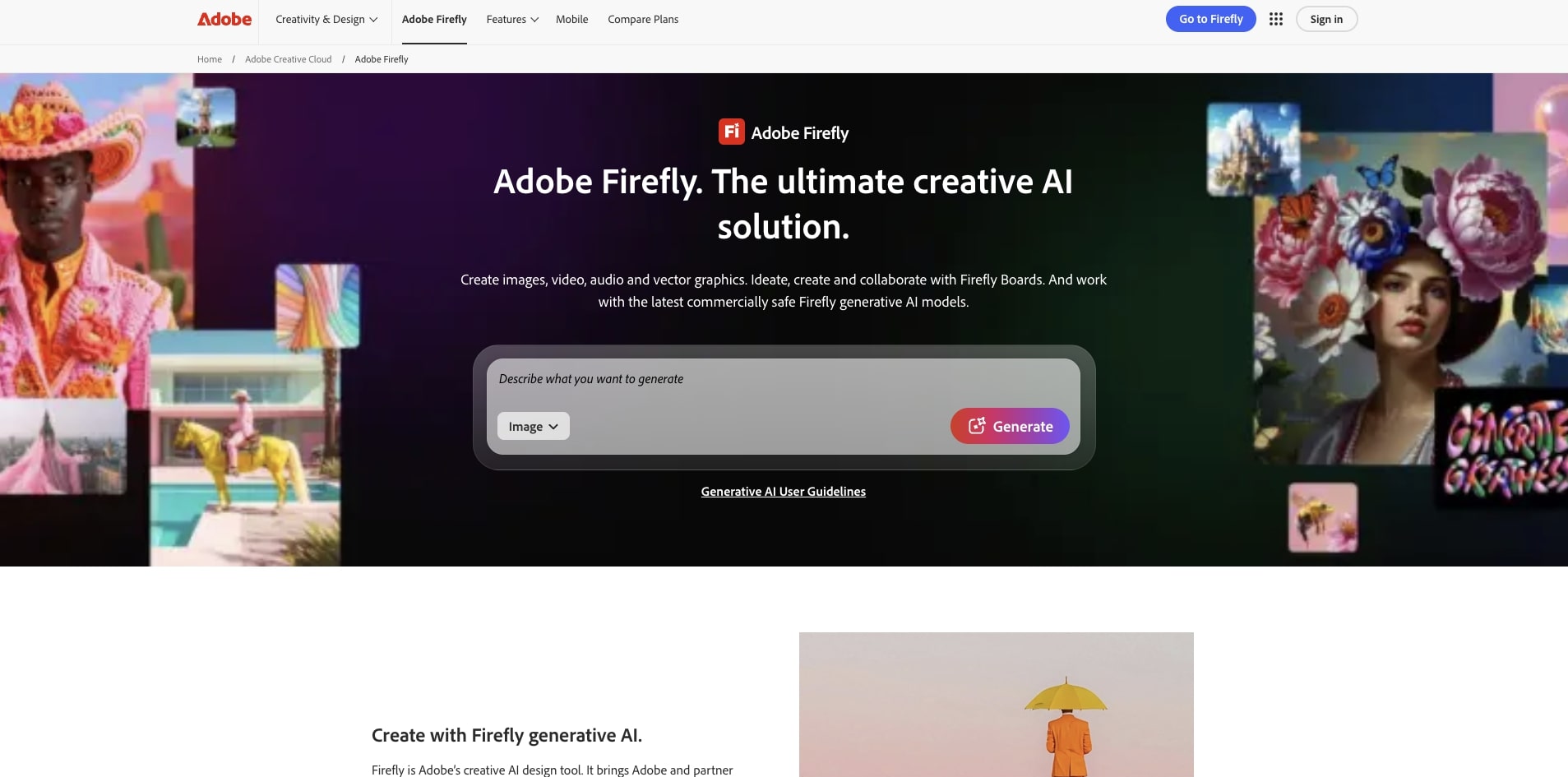
Best AI Image Generator for High Detail: Adobe Firefly
If you need realism that holds up under a zoom lens, try Adobe Firefly. It integrates with Photoshop and leans into photo-quality output. Lighting, fabric rendering, depth of field — Firefly balances it all with refinement that doesn’t feel uncanny.
It’s especially strong with material rendering, making it a favorite for product designers and high-end fashion teams. Combined with Pixofix’s detail-first approach to retouching, Firefly becomes an engine for visual storytelling — all without the need for full-scale shoots.## Practical Use Cases for AI Image Generators

Best AI Image Editor for Likeness Consistency - Nano Banana (Gemini)
If you need fast edits that keep people looking like themselves, try Nano Banana, Google’s Gemini-based image editor. It’s built for prompt-driven photo editing, turning a single reference photo into many on-brand variations while preserving identity, outfits, and scene context. You can blend multiple images (e.g., product + model), restyle garments, or swap backdrops without breaking facial consistency — great for UGC-style ads, influencer mockups, and rapid campaign testing. Nano Banana also slots neatly into Google’s ecosystem, so creative teams can generate and tweak assets where they already work.
Enhancing Product Images for Listings
AI image generators aren't just about creativity. They solve real ecommerce problems — like endless product variations, seasonal themes, and missing assets. Need your top-selling sneaker in ten new colorways before production wraps? A well-trained model can generate photorealistic mockups in hours, not weeks.
This flexibility shortens development timelines and keeps product listings visually rich. No more awkward placeholders or compressed studio schedules. Teams can test different backgrounds, materials, or angles before committing to final renders. And when it’s time to go live, partners like Pixofix can retouch these AI outputs for clarity, texture accuracy, and subtle realism — so shoppers see what they trust, not what feels artificial.
Creating Unique Marketing Campaign Visuals
Campaigns thrive on differentiation, and AI opens the door to fast, limitless concepting. Imagine a swimsuit brand launching a summer drop — they can prompt sun-drenched beachscapes, stylized product shots, or lifestyle concepts with just a few keystrokes, adjusting tone, audience, or aesthetic on command.
Since these assets don’t depend on physical shoots, teams can iterate faster and shift direction without added cost. Once the vision is locked, high-res AI renders become a creative base. Studios like Pixofix then step in to add depth, finesse, and human touches that make campaigns feel crafted, not generated.
Integrating AI-Generated Images in Social Media
Social content demands speed and volume — two things AI is perfect for. Need carousel visuals for a product launch, daily posts for a new collection, or themed imagery for a specific audience? AI generators can produce cohesive series in minutes, freeing marketing teams to focus on captions, strategy, and engagement.
But volume isn’t enough. To avoid falling into the generic-AI-art trap, the best brands still post-process with intent. Adding subtle textures, adjusting skin tones, refining shadows — these tweaks push content from "AI cool" to brand-aligned. That’s where creative partners like Pixofix can help studios keep output high while still keeping brand integrity intact.
Step-by-Step Workflow for Using AI Image Generators
Generating High-Quality Images
Start with a goal. Not just “make a product shot” — outline the vibe, audience, use case, and format. Then craft prompts that reflect that clarity. Think beyond keywords: include atmosphere, angle, color tone, even lighting cues.
Use tools that allow fine control. Midjourney is solid for stylized product scenes. Adobe Firefly leans toward realism. Set resolution preferences early, and iterate until visuals feel aligned with the style guide.
Pro tip: Build a prompt library tailored to your brand language. It creates consistency across campaigns and helps junior team members hit the visual tone faster.
Editing and Retouching AI-Generated Images
AI rarely nails it 100%. Look closely and you'll find odd finger placement, fabric glitches, or lighting inconsistencies. That’s where post-production steps in.
Bring the files into Photoshop or Capture One for cleanup. Focus on realism — smoothing surfaces, correcting symmetry, or enhancing product texture. Be subtle. Retouching should make the image feel real, not overly processed.
For ecommerce teams pushing out volume, working with a retouching studio like Pixofix lets you offload the polish stage. They specialize in AI-to-ready workflows, maintaining style guides and output specs across SKUs or campaigns.
Optimizing Images for Web Use
Don’t let a beautiful image slow down your site. AI-generated files are often large and uncompressed. Use tools like TinyPNG or Squoosh to shrink file size without killing quality. Apply lazy loading and image formats that fit your platform — WebP for Chrome-heavy audiences, JPEGs where compatibility matters.
If you're working with a retouching partner like Pixofix, discuss export specs in advance — DPI, resolution, background transparency — so you receive delivery files that are web-ready out of the box.
And always run A/B tests. Changing one background or aspect ratio can affect mobile conversion.
Common Mistakes to Avoid
Neglecting Proper Prompting Techniques
The biggest myth? That AI will read your mind. It won’t. Vague prompts lead to vague results — flat lighting, awkward angles, or visuals that just... miss.
Instead of writing “modern shoe on white,” try “side view of modern leather sneaker on seamless white studio backdrop, soft shadows, 3-point lighting.” The extra detail gives AI a foundation. Share reference images when available. The more context, the less trial and error.
Prompting is an art form. Build internal templates. Iterate. And if you’re stuck, ask your retouching partner how they interpret brand visual cues — they might see what your AI isn’t.
Overlooking Image Optimization Best Practices
Beautiful doesn’t matter if it won’t load. Many brands forget to compress images, crop properly for mobile, or tag them for SEO. All of that impacts UX and discoverability.
For ecommerce, each product image should be crisp, fast-loading, and keyword-tagged. Tools like Cloudinary can automate some of this. Working with production-focused retouchers like Pixofix also helps — they package deliverables with optimization in mind, not just aesthetics.
Ignoring Branding Consistency
Consistency is more than colors and fonts. It’s camera angles, cropping tolerance, lighting setups — an overall visual signature.
If your AI output looks like it was made by five different people, your brand trust dips. Create visual style guides for AI-generated shots. Define your lighting preferences, background types, and negative prompts (what to avoid).
When retouching AI-generated assets, teams like Pixofix rely on these guides to maintain brand integrity at scale. Otherwise, you’re just producing content. Not expressing identity.
Optimization Tips for AI-Generated Images
Enhancing Image Quality and Resolution
AI outputs often look sharp on screen but fall apart on zoom. Low dynamic range, pixel noise, edge softness — they all show up during editing or on retina displays.
Use tools like Topaz Gigapixel or Photoshop’s Super Resolution for upscale without artifacts. Adjust contrast with light hand — most AI renders have a baked-in “overprocessed” feel. Dial it back.
Need help turning AI drafts into retail-grade visuals? Pixofix works directly on these files to enhance detail in materials, fabrics, and skin while preserving realism.
Using Layers for Advanced Customization
Treat AI renders like a raw file. In Photoshop, isolate elements—backgrounds, shadows, products—using layer masks. This lets you fine-tune specific areas without affecting the whole image.
Maybe you love the lighting but hate the crop. Or you want to swap props but keep the product untouched. Layering makes that doable.
The best studios slice AI outputs into modular parts, then rebuild selectively. This hybrid approach blends speed from AI with human craftsmanship. That’s how brands keep flexibility without losing finish quality.
Utilizing Color Schemes That Match Brand Identity
An image can be beautiful and still feel off-brand. AI doesn’t inherently know your color palette — unless you feed it.
Include references to brand colors in your prompts, or adjust hues in post production. Color grading presets help standardize asset batches. Better yet, build LUTs (Look-Up Tables) specific to your campaigns.
Pixofix often builds these LUTs per client, applying them across AI-retouched image sets to maintain tone, mood, and saturation levels that match rest-of-site visuals.
Metrics to Measure Success
Analyzing Engagement Metrics
Start with basic signals: time on page, bounce rate, and scroll depth. If your AI-generated visuals keep users leaning in? That’s working.
For social assets, look at saves, shares, and click-throughs. AI content that triggers curiosity often performs better than standard stock. Especially when visuals feel aspirational or surreal, but not fake.
Compare engagement rates pre- and post-AI visuals. Make sure to isolate variables so you’re tracking real change, not just seasonal lifts.
Tracking Conversion Rates from AI-Generated Images
Interaction is good. Sales are better. Use A/B testing platforms like Google Optimize or Convert to test product pages with AI-generated vs traditionally shot images.
Track add-to-cart rates, checkout progress, and bounce exit points. If AI images stack up or outperform legacy content, you’ve unlocked a viable production workflow. If not, analyze which details feel disruptive — often, it’s small things like shadows or scale that break shopper trust.
Combining AI generation with retouching partners like Pixofix often helps here. The polish adds believability, which is often the missing link between intrigue and conversion.
Evaluating Customer Feedback
The inbox never lies. Watch for replies like “Is this the real product?” or “What color is this IRL?” These are early signs your images might be missing realism or clarity.
Use surveys or post-purchase feedback loops to ask how imagery influenced buying decisions. Was the visual precise enough? Did it match expectations? Would they trust future purchases based on similar imagery?
AI visuals don’t live in a vacuum. They influence trust. Keep that dialogue open, and loop feedback into your next round of image generation or retouching tweaks.## The Legal and Ethical Aspects of AI-Generated Images
Copyright Considerations with AI Images
Here’s the complicated part: most AI image generators don’t own the images they produce, and neither do you — not in the traditional copyright sense. Images generated by AI often fall into a legal gray zone, mainly because current copyright law usually requires a human author to claim ownership.
Some tools, like Adobe Firefly, offer usage rights that are clearly stated and commercially safe, since they’re trained on licensed datasets. Others, like Midjourney or Stable Diffusion, may have trained on scraped web data — including copyrighted work — which could put your brand at risk if those IPs bleed into the final generated image.
Always check the tool’s licensing terms. If you’re using AI-generated images for product pages, ad creatives, or anything customer-facing, assume you’re liable. When in doubt, have your legal team review permissions, or run final visuals through trusted studios like Pixofix to clean up and standardize outputs, reducing any telltale signs of derivative content.
Bottom line? Don’t treat AI images as automatically free to use. Treat them like stock photos — useful, but only if vetted.
Ethical Usage in Marketing and Branding
AI can fake a lot: locations, diversity, even product features. But leaning too hard into that flexibility can backfire. If your swimsuit mockup shows palm trees and a beach but the product hasn’t launched yet, you’re setting up unrealistic expectations. Consumers can smell fake. And trust erodes fast.
Representation is important too. Generating diverse imagery to fill gaps in your campaigns is smart — unless it’s tokenistic or inauthentic. Context matters. Casting should still reflect your customer base. Don’t let the tool replace real people when it matters most.
Transparency is your safety net. If AI-generated visuals are part of a concept board or pre-launch tease, say so. For ecommerce brands, using AI for visual ideation is smart and strategic — but the final product shots should hold up under scrutiny. That’s why teams often bring in Pixofix for the final polishing phase. Their human-touch approach helps preserve believability, nuance, and brand voice.
Ultimately, ethics in visual content isn’t just about permission. It’s about respecting your audience’s trust.




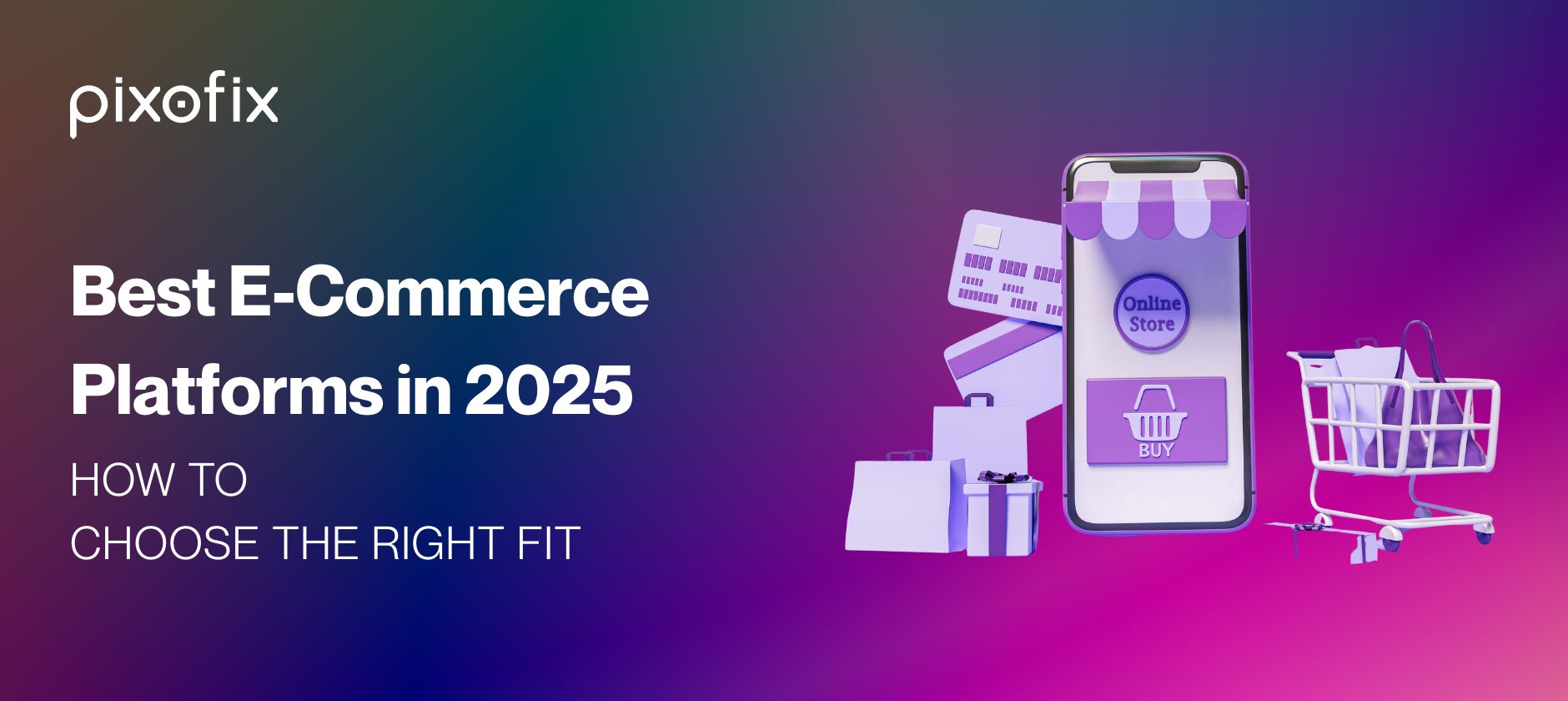
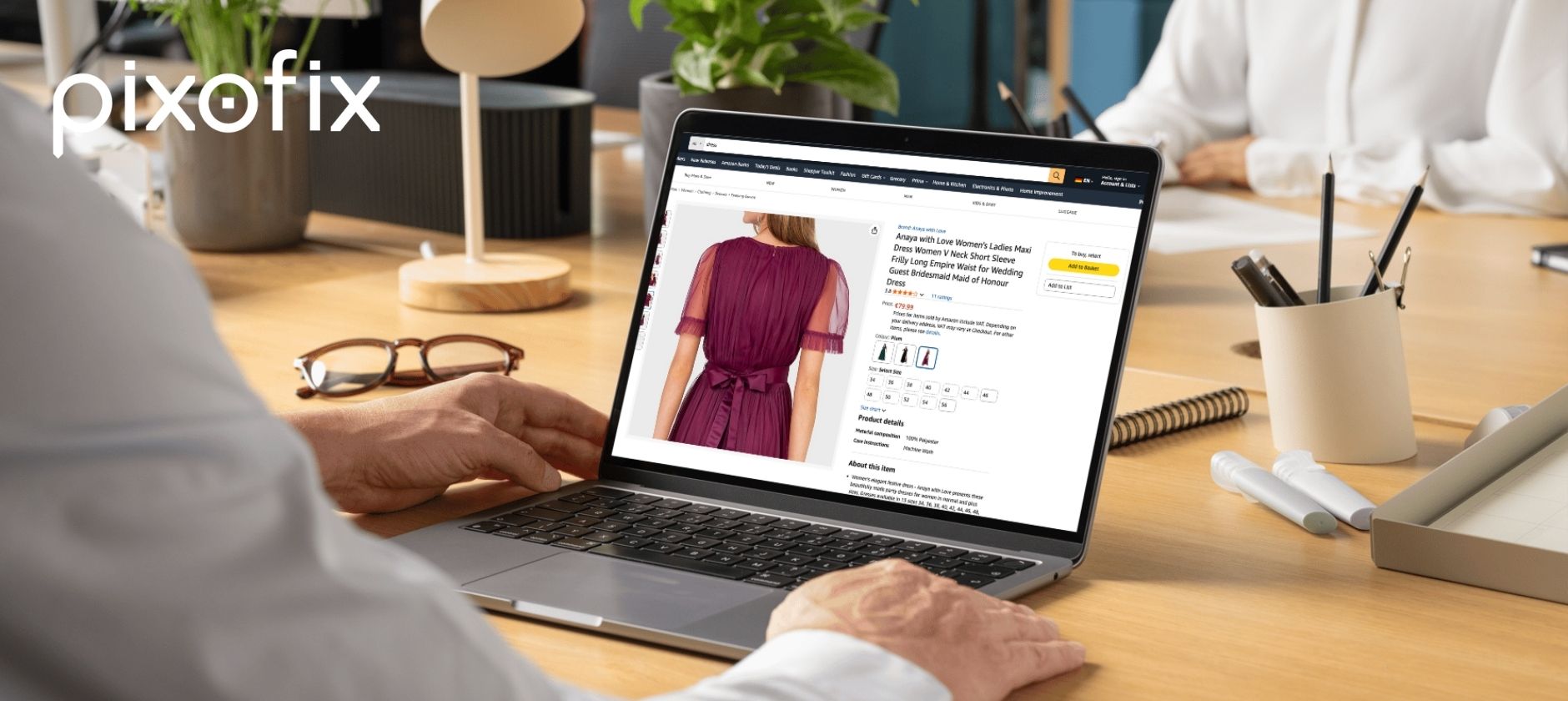
.png)

.png)
